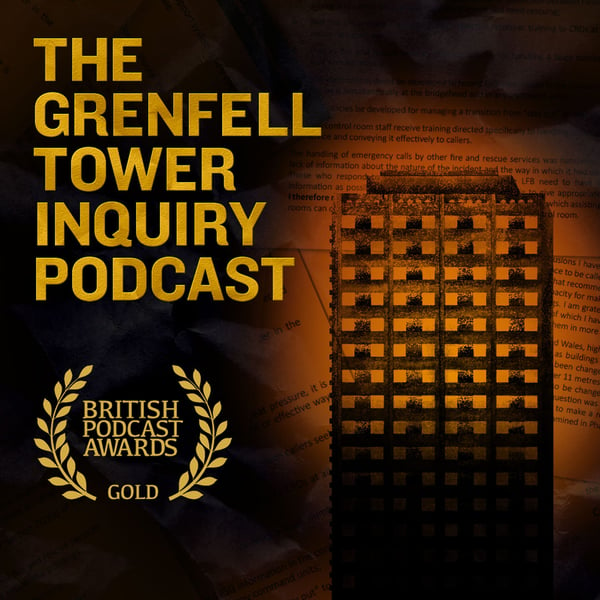144 The Building Research Establishment: Week 2
The Grenfell Tower Inquiry Podcast
BBC
4.8 • 627 Ratings
🗓️ 5 March 2021
⏱️ 47 minutes
🧾️ Download transcript
Summary
A manager at the BRE accepted he made a fundamental omission when analysing test data. Tony Baker told the inquiry he failed to notice non-combustible magnesium oxide boards used in a test by the insulation manufacturer Celotex. The inquiry also heard from David Jones of Herefordshire Building Control who produced a certificate which incorrectly stated Kingspan insulation was a material of ‘limited combustibility’. This is the standard suggested for use on buildings over 18 metres in height. He admitted taking information at ‘face value’ but told the inquiry he was misled by Kingspan.
Presenter / Producer: Kate Lamble Producer: Sharon Hemans Researcher: May Cameron Studio Mix: Gareth Jones
Transcript
Click on a timestamp to play from that location
| 0:00.0 | Hello and welcome to the Grenfell Tower Inquiry podcast with me, Kate Lamble. |
| 0:10.0 | This week, a manager from a national testing laboratory accepted that he made a fundamental |
| 0:15.0 | omission when analysing a large-scale fire test carried out by the insulation manufacturer Sellatex, |
| 0:21.7 | and a building control officer claimed that the insulation manufacturer Kingspan misled him. |
| 0:27.6 | Let's get to the evidence then. |
| 0:29.4 | The inquiry has now heard from most of the manufacturers of the cladding products installed on Grenfell Tower, |
| 0:34.9 | so it's turning its attention to the organisations which tested |
| 0:38.6 | and certified those products for use on high-rise buildings. Just like last week, the major |
| 0:44.3 | focus of this week's evidence was the building research establishment. This is |
| 0:49.1 | counseled to the inquiry, Kate Grange, reading from one witness statement. |
| 0:53.7 | BRE is an independent and accredited testing laboratory, which may be engaged by test |
| 1:00.0 | sponsors to carry out specific standardised fire testing. Essentially, if you were a manufacturer |
| 1:06.2 | and you wanted to prove your product met certain standards, you could pay the BRE to carry out the fire |
| 1:12.4 | test. The BRE had close links to government. In fact, it was the UK's National Research Centre |
| 1:18.9 | for Building Science until 1997, when the organisation was turned into a charitable trust. |
| 1:25.5 | And that means the work the BRE carried out over the years influenced |
| 1:29.2 | regulations. One of the witnesses this week, Tony Baker, even co-authored an issue of the document |
| 1:35.5 | which allowed combustible materials to be used on high-rise buildings if they passed large-scale |
| 1:41.8 | fire tests. And given the BRE's role, |
| 1:45.0 | the organisation's independence during the tests |
| 1:47.9 | it carried out on the materials |
| 1:49.7 | later installed on Grenfell Tower |
... |
Please login to see the full transcript.
Disclaimer: The podcast and artwork embedded on this page are from BBC, and are the property of its owner and not affiliated with or endorsed by Tapesearch.
Generated transcripts are the property of BBC and are distributed freely under the Fair Use doctrine. Transcripts generated by Tapesearch are not guaranteed to be accurate.
Copyright © Tapesearch 2025.

